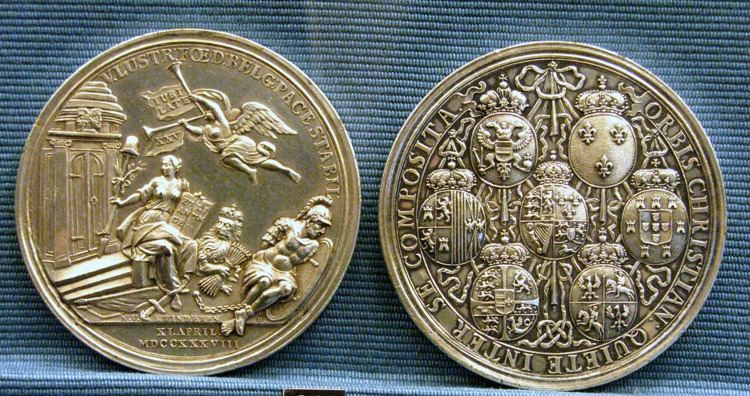 | ||
Written in latin, the Treaty of Vienna or Peace of Vienna was signed on 18 November 1738. It was one of the last international treaties written in Latin (together with the Treaty of Belgrade signed the following year). It ended the War of the Polish Succession. By the terms of the treaty, Stanisław Leszczyński renounced his claim on the Polish throne and recognized Augustus III, Duke of Saxony. As compensation he received instead the Duchy of Lorraine and Bar, which was to pass to France upon his death. He died in 1766. Francis Stephen, who was the Duke of Lorraine, was indemnified with the vacant throne of the Grand Duchy of Tuscany, the last Medici having died in 1737. France also agreed to the Pragmatic Sanction in the Treaty of Vienna. In another provision of the treaty, the kingdoms of Naples and Sicily were ceded by Austria to Duke Charles of Parma and Piacenza, the younger son of King Philip V of Spain. Charles, in turn, had to cede Parma to Austria, and to give up his claims to the throne of Tuscany in favor of Francis Stephen.
